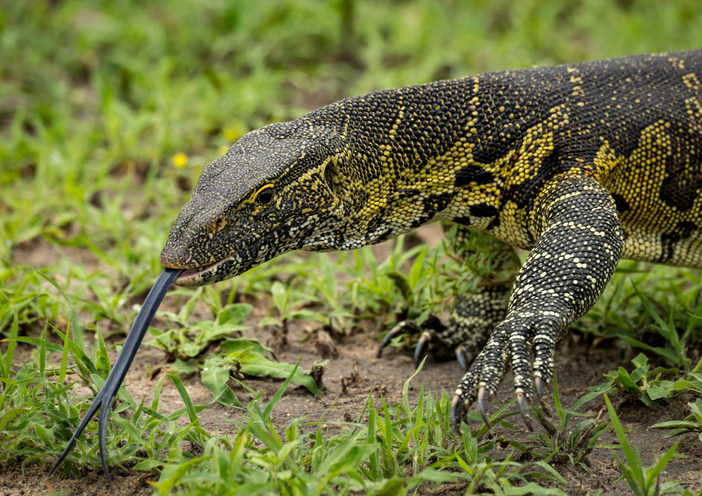Scientists discover ancient lizard had four eyes

When it comes to this ancient monitor lizard, the nickname 「foureyes」 is all too accurate. Scientists recently took a closer lookat fossils of the reptile and discovered it had two extra eyes ontop of its head.
The lizard, known as 「Saniwa ensidens,」 was unearthednearly 150 years ago in the Bridger Basin in southwesternWyoming. But it wasn』t until recently that scientists found — usinga computed tomography (CT) scanner — that the ancient creatureis the only known jawed vertibrate to roam the Earth with foureyes, according to a study published Monday in the journal「Current Biology.」
「This tells us how easy it is, in terms of evolution, toself-assemble a complex organ under certain circumstances,」 Yalepaleontologist Bhart-Anjan Bhullar and co-author of thestudy told YaleNews. 「Eyes are classically thought of as theseremarkably complex structures. In fact, the brain is just waitingto make eyes at all times.」
Researchers from Yale and Germany』s Senckenberg ResearchInstitute teamed up to prove that the fourth eye suggestslizards may have evolved differently than other vertebrates, suchas frogs and fish.
「This fourth eye confirms that the third eye in lizards is aparapineal derivative,」 the study explains. 「The evolution of thepineal shows not only parallel reductions but alsoelaboration.」
Most jawed vertebrates have a pineal organ, whichresearchers refer to as a 「third eye」 that acts as an internalclock. But many believe the lizard』s third eye developed fromanother organ known as the parapineal — and researchers arepointing to this study as proof.
「By discovering a four-eyed lizard, in which both the pineal andparapineal formed an eye on the top of the head, we could show thatthe lizard third eye really is different from the third eye ofother vertebrates,」 lead author Krister Smith, who works for theSenckenberg Research Institute, told YaleNews.
Using a CT scanner, researchers were able to more closelyexamine 1870s samples of the creature, which is approximately 49million years old, and create 3D images to help them get a betterlook at their third and fourth eyes on top of the head.
「The CT scans showed that the ancient monitor lizard … hadspaces in its skull where a fourth eye would have sat,」 LiveSciencereports.
The tests helped support researchers』 theory that 「pineal andparapineal eyes were not a pair of organs,」 YaleNews reports.However, more research needs to be done to determine how and whenthe lizard』s third eye developed, researchers say — and they planto do just that.
「It』s important to recognize that there』s nothing mystical aboutthe pineal and parapineal organs,」 Smith said. 「They can senselight and play a role in the endocrine system. However, some of theabilities conferred by the pineal are really quite extraordinary.For instance, some lower vertebrates can sense the polarization oflight with the third eye and use this to orient themselvesgeographically.」












